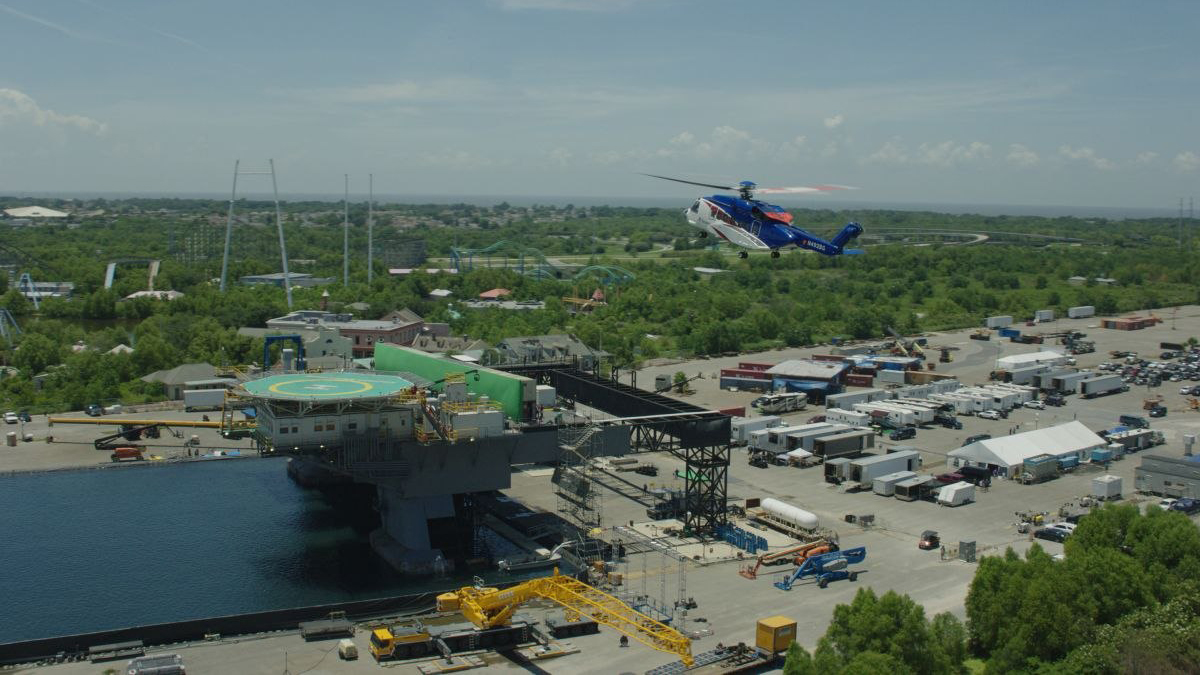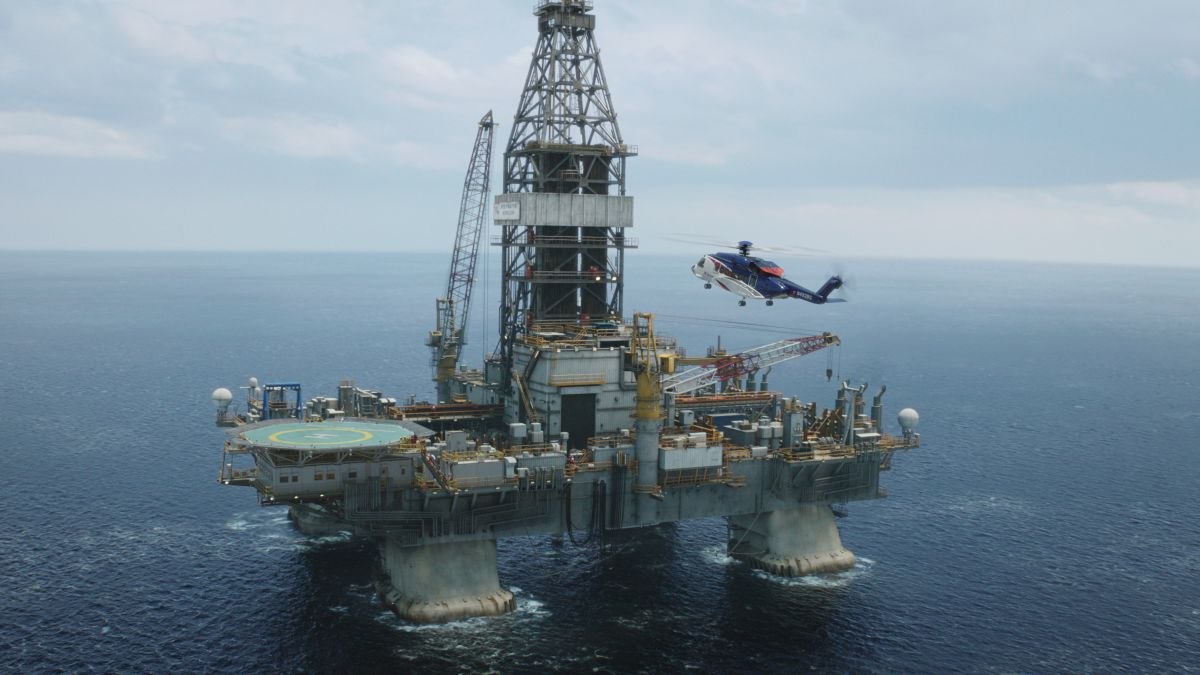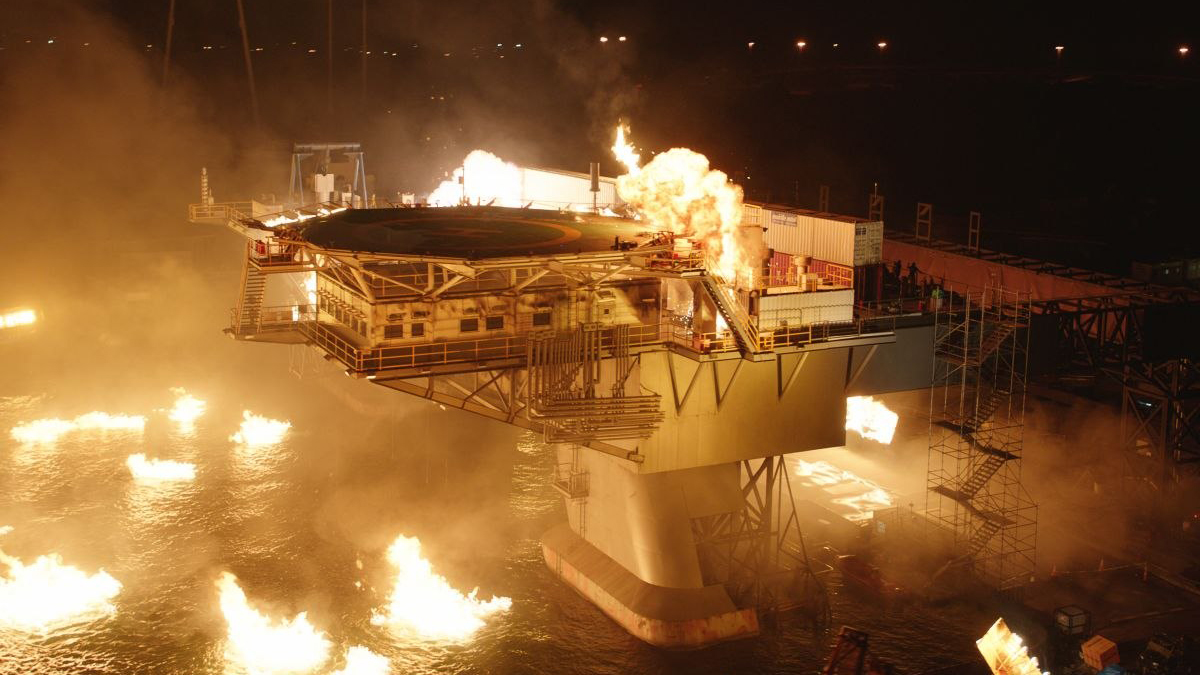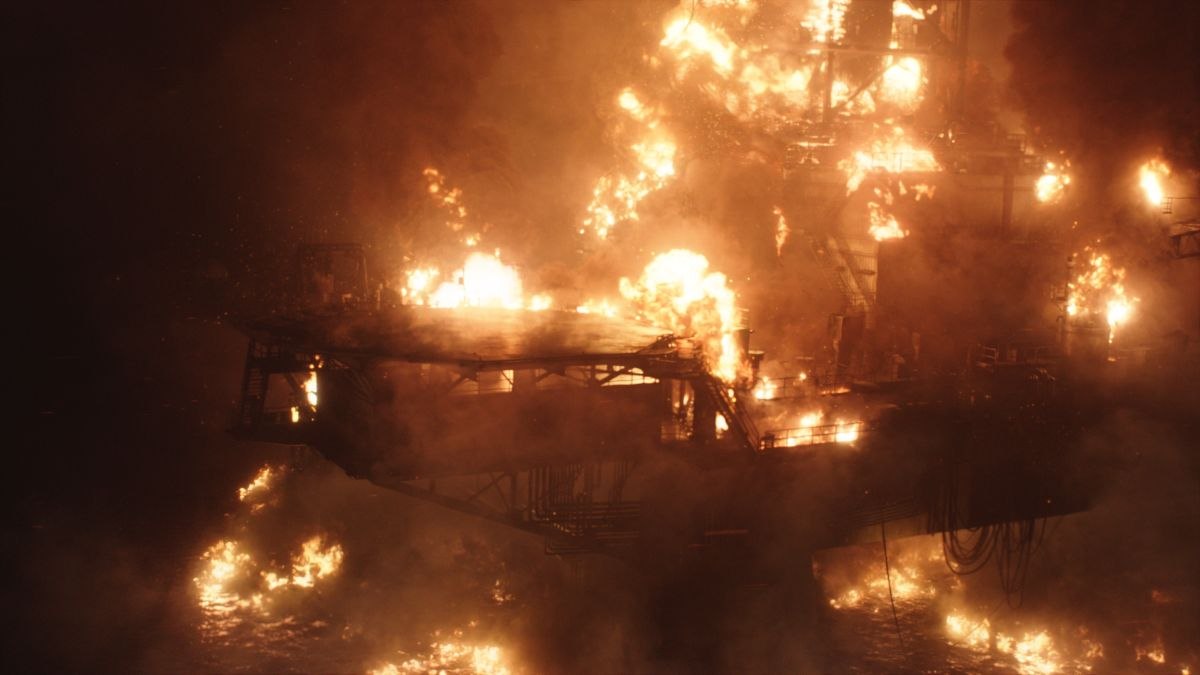Every year, five films are nominated for an Academy Award in the “Visual Effects” category. Each of the projects nominated this year offer a unique, inside look at the amazing tricks filmmakers and their talented effects teams use to pull off the visual spectacles that make for a big-screen blockbuster. In recognition of these five films — and one of our favorite Oscar categories — we’re putting the spotlight on one “Visual Effects” nominee each day leading up to Sunday’s broadcast, and taking a closer look at what made them stand out.
First up is the real-world drama Deepwater Horizon, which recreated one of the most devastating ecological disasters of the modern era by combining a monstrous set with highly advanced software and an explosive attention to detail.
The use of visual effects is often associated with the most fantastic elements of films, whether creating a voyage through space, a jungle filled with talking animals, or magical abilities that defy the laws of physics. And yet, some of the most demanding effects can be those that recreate real-world events in a way that brings the audience into the action.
In 2016’s Deepwater Horizon, director Peter Berg and the visual effects team at Disney’s Industrial Light and Magic strove to do just that, thrusting audiences – and a talented cast led by Oscar nominee Mark Wahlberg – into the events leading up to and during the calamitous 2010 oil-rig explosion that caused the worst marine oil spill of all time and the largest environmental disaster in U.S. history.
“I’m pretty sure it’s the biggest practical set ever built in the history of filmmaking.”
Recreating the explosive events aboard the rig — which generated a massive fireball visible from 40 miles away and led to the deaths of 11 crew members — was no easy task for Berg and the film’s VFX team. With so much of the action unfolding in and around fiery conditions, the need to show characters dealing with all of these threats while navigating the rig required a careful balance of practical and computer-generated effects.
“The only way that happens is if they don’t recognize the stitches of fake imagery,” explained the film’s lead visual effects supervisor, Craig Hammack, in an interview with Animation World Network. “The small margin of error involved in the work was kind of the main challenge, just to keep people in that experience.”
In order to create that tangible, immersive experience for both the cast members and the audience, Berg and his team did something few films would even consider: They built a massive replica of the oil rig in an abandoned parking lot in Louisiana, constructed to 85-percent scale. The rig was surrounded by a similarly massive tank holding millions of gallons of water and lined with pipes capable of engulfing the entire apparatus in flames.
The fabricated oil rig – which was constructed to replicate both the interior and exterior of the Deepwater Horizon – was then sectioned off in order to compartmentalize the filming process and streamline production. The three portions of the set recreated the drill floor area, the main deck of the rig, and the exterior lifeboat deck and helipad, which was surrounded by water and was built to allow an actual helicopter to land on it during filming.
“It was akin to any legitimate construction project, whether it’s a hotel or a hospital or an apartment building,” Berg told the Los Angeles Times back in September 2016. “I’m pretty sure it’s the biggest practical set ever built, really ever, in the history of filmmaking. It’s certainly one of them.”
“(The fire) needed to feel like an active, fast moving monster.”
These gigantic, detailed set pieces gave the digital effects team a better canvas to work with when it came to filling in the gaps between set pieces and extending portions of the background environment digitally. The considerable amount of practical effects built into the set also allowed the ILM team to focus their efforts on the movie’s prominent, non-human star: The raging, oil-fed fire that quickly consumes the Horizon.
The inferno that springs from nearly every corner in Deepwater Horizon spends more than 30 minutes on screen, and therefore demanded a more sustained approach to creating the digital blaze than previous projects Hammack has supervised, which include visually charged films like Battleship and Now You See Me.
“This was a different kind of animal,” said Hammack of the fire. “It needed to be sustained with multiple fuel sources, and have a really nasty toxic black smoke that rolls through it, with multiple sources feeding into each other. It needed to feel like an active, fast moving monster.”
ILM already had its own, proprietary simulation and rendering engine, Plume – but even that Oscar-winning technology wasn’t capable of manifesting the fire’s on-screen presence and the way this particular sort of fire would realistically act in such an environment over extended periods. Where most digitally created fire effects in films tend to be temporary explosions that fade into the background, the ILM team found themselves working hard to “tame” the simulation created for Deepwater Horizon, according to Hammack.
The unique type of fire generated by the pressurized flow of oil also changed the game for ILM, which had to accurately present the thick, black smoke that comes from this particular sort of inferno and the fire’s tendency to spread throughout the rig — creeping in some cases and racing across the environment in others. At one point, the flames even climb a 300-foot column in the center of the rig, spreading upward and outward rapidly as the fire ignites the highest reaches of the platform.
Where a simple layering of flame effects upon each other sufficed for previous films, the evolving inferno of Deepwater Horizon necessitated a dramatic upgrade in ILM’s simulation software.
“We were able to re-engineer the scatter model of the look so it takes into account open space between the fire simulations,” recalled Hammack while discussing the film with IndieWire. “We advanced our ability to have fires interact with themselves and with the other simulations. It brought this out to a scale of realism that we hadn’t reached before.”
The overall effect leads to staggering realism for an engaging viewing experience. And if fortune favors Deepwater Horizon this upcoming weekend, it will bring an Oscar home for the film, too.
The 89th Academy Awards ceremony will air Sunday, February 26, at 7pm ET on ABC.
Editors' Recommendations
- How VFX powered Spider-Man: No Way Home’s villain team-up
- How Dune’s visual effects made an unfilmable epic possible
- How GPU-fueled visual effects built Black Widow’s Red Room, then blew it up
- How visual effects took Love and Monsters’ sweet creature feature to the Oscars
- How visual effects made Mulan’s battles bigger and its hero fly higher








